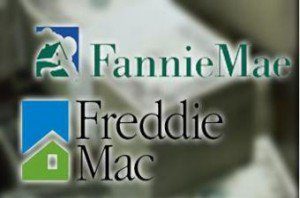 According to the Wall Street Journal, Fannie Mae and Freddie Mac have been increasingly backing loans to borrowers with heavy debt loads. The Journal reports that 30% of loans packaged into into bonds by Fannie and Freddie within the last year were to homebuyers whose total debt payments amounted to more than 43% of their incomes. This share has doubled since 2015.
According to the Wall Street Journal, Fannie Mae and Freddie Mac have been increasingly backing loans to borrowers with heavy debt loads. The Journal reports that 30% of loans packaged into into bonds by Fannie and Freddie within the last year were to homebuyers whose total debt payments amounted to more than 43% of their incomes. This share has doubled since 2015.
“Some say cheap, federally backed financing has made credit available for millions of borrowers who otherwise might not have had a shot at homeownership,” said WSJ’s Ben Eisen. “Others say that more-indebted borrowers are riskier, and that their purchases may be accentuating a rise in home prices that in many areas has outstripped median incomes.”
One possible factor driving the increase is the qualified mortgage patch (QM patch). The Urban Institute estimates that an additional 3.3 million mortgages were originated between 2014 and 2018 because of the patch. Additionally, though the GSEs have tightened some standards, Fannie announced around two years ago that it would more freely guarantee mortgages with debt-to-income ratios of between 45% and 50%. Federal Housing Finance Agency (FHFA) Director Mark Calabria has announced that he plans to address the issue, while working to move Fannie and Freddie out of conservatorship.
Patch usage has grown in the last few years, and according to Calabria, changing the patch would be a key tool to shrink Fannie and Freddie without a full overhaul, though he states that he does not intend to do away with it entirely.
In a recent interview with the Journal, Calabria stated that he wants to put the now-profitable GSEs back into private hands, something that has been tried and failed by lawmakers in the past.
“I see my goal as setting a path to end the conservatorship” for the companies, he said, adding that “they have to be stronger, healthier companies” compared to before the 2008 housing crisis.
“My objective is to get us to a spot where we don’t have to worry about the system blowing itself up,” he continued.

 DSNews The homepage of the servicing industry
DSNews The homepage of the servicing industry









